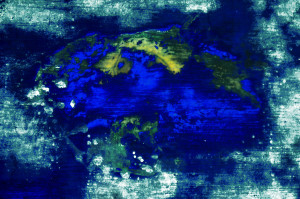ANIMA MUNDI
by Leonida Gianfagna
<<Call the world if you please ‘The Vale of Soul’. Then you will find out the use of the world’ >> are the words of J. Keatslater taken by J.Hillman to better introduce the work of Antonio Zasa.
Only from this perspective, that of a non-instrumental observation of the world but aimed to reveal his poetry, we can approach to the photography by this author.
Always quoting Hillman:
“Today we tend to forget that the soul is not only within us but outside us too. And when we are in a garden, be it French or Asian garden or in any other place, it shows something of the Anima Mundi. The Soul of the World becomes visible and even shows off “.
And this Soul of the World is what you immediately feel the unveiled presence when the faithful approach to images and suggestions in this work.
” Unconscious art ” I think it is a fitting title for something that barely we are able to define photograph in the classic sense of the term, unconscious because the same act of taking photographs reveals and disclose what is not visible in the normal observation of the world.
The details, common objects, dare I say trivial objects, express in this way a depth and richness of meaning that we almost exceeds the saturating our perceptive possibility.
Travelling, because we re talking about of travelling , through images such as “Acid”, “Artic Night” or “African Memories,” to name a few, leads us to completely re-examine our relationship of use of the world around us and forces us to elevate this simple relationship of use in celebration of the sacred of each Entity such as.
Because where is case, usual and ordinary, depth is rediscovered, richness of meaning and memory of the world entire if observed through the filter of the unconscious art , through the eye of the poet, the eye of the mystic in his celebration of the World as it is .
It is a photograph that , broken every delay and every claim of verisimilitude or adherence to ordinary reality, elevate itself to an instrument of fracture, to a “poetic act” aimed to restore magic to our the rigid and crystallized observation of what surrounds us.
It is an avant-garde photography that breaks with every preconstituted purpose of photograph as such, with any technique that can in some way decrees its quality; is what Kandinsky better than anyone else defines the spiritual in art, An Art that, released and freed from the dominion of figurative re-establishes an authentic contact with the Anima Mundi.
 ZASA Photographer
ZASA Photographer 

